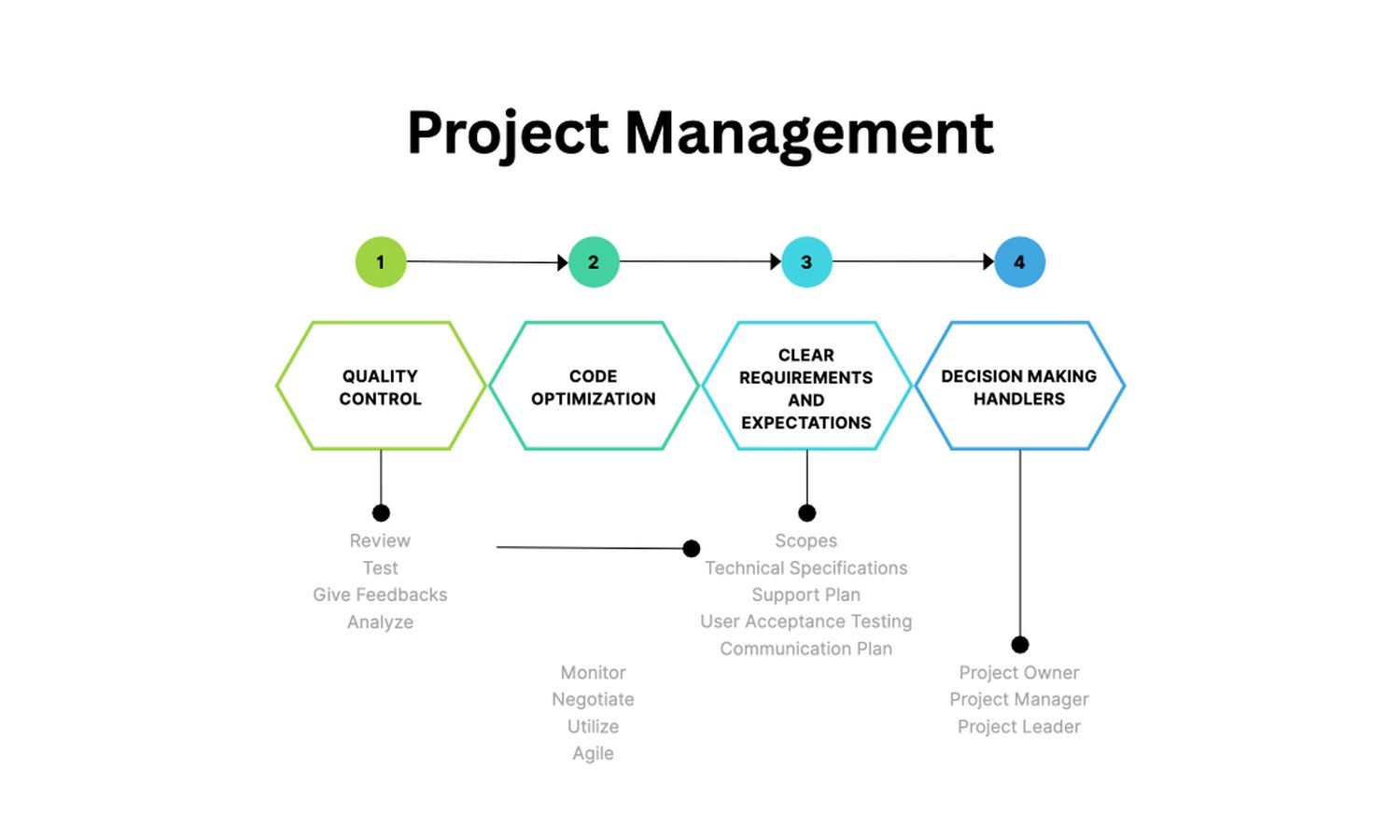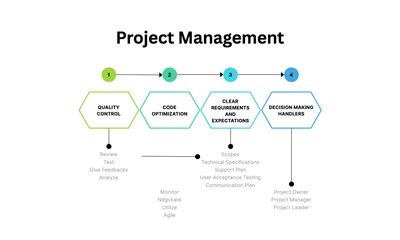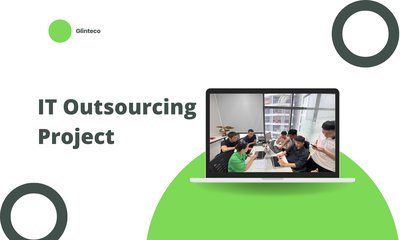ソフトウェア開発プロジェクトのアウトソーシング成功ガイドライン
By JoeVu, at: 2023年2月15日20:10
Estimated Reading Time: __READING_TIME__ minutes


概要
- はじめに
- サービス品質管理
- コスト最適化
- 明確な要件と期待
- 意思決定担当者
- 結論
はじめに
企業がサードパーティベンダーの専門知識を活用しようとするにつれて、ソフトウェアプロジェクトのアウトソーシングはますます普及しています。適切に行われると、アウトソーシングは企業がコスト削減を最大化し、プロセスを合理化し、全体的なサービス品質を向上させるのに役立ちます。この記事では、サービス品質管理、コスト最適化、明確な要件と期待、意思決定担当者などの重要な要素に焦点を当て、成功したアウトソーシングプロジェクトの管理方法について説明します。
サービス品質管理
成功したアウトソーシングプロジェクトの鍵は、サービス品質管理を確保することです。これには、提供される仕事の品質、プロジェクトのターンアラウンドタイム、従うべきコミュニケーションプロトコルなど、最初から明確な期待を設定することが含まれます。また、完了した作業を確認し、フィードバックを提供して、ベンダーが要求された基準を満たしていることを確認することも重要です。
私たちが使用できるいくつかのヒントがあります
1. 自動テスト:自動テストは、ソフトウェアが要求された仕様を満たしており、エラーがないことを検証するために使用されるプロセスです。自動テストは、機能、使いやすさ、パフォーマンスなど、ソフトウェアのさまざまな側面をテストするように記述できます。
ツール:PlayWright、Selenium、Protractor、 Appium。
2. コードレビュー:このプロセスには、経験豊富な開発者がソースコードを確認し、それが必要な基準を満たしていることを確認することが含まれます。
ツール:Crucible、Phabricator、Code Climate
3. コードリファクタリング:このテクニックは、コードベースに変更を加えることで、コードの構造と品質を向上させるために使用されます。
ツール: Stepsize、Eclipse IDE、Visual Studio IntelliCode。
4. パフォーマンステスト:このプロセスは、ソフトウェアのパフォーマンスを測定するために使用されます。パフォーマンステストでは、ソフトウェアの速度、メモリ使用量、その他の側面を測定できます。
ツール:JMeter、LoadRunner、WebLOAD。
5. ソースコード分析:この方法は、ソースコードを分析し、改善できる領域を特定します。
ツール:SonarQube、CheckStyle、およびFindBugs。
コスト最適化
アウトソーシングソフトウェアプロジェクトの管理におけるもう1つの重要な要素は、コスト最適化です。これには、最も適切なオプションを見つけるためにベンダーを調査および比較すること、および最も費用対効果の高いソリューションが選択されるように価格交渉することが含まれます。さらに、ベンダーが予算内でプロジェクトを提供できることを確認することが重要です。
以下の提案に従いましょう:
1. 現在のソフトウェア開発プロセスを監視および分析する:JIRAやTrelloなどのツールを使用して、現在のソフトウェア開発プロセスを監視および分析し、潜在的なコスト削減できる場所を理解します。
2. 自動化を活用する:自動テストと展開プロセスを活用して、人的コストを最小限に抑えます。
3. ベンダーと交渉する:最高の料金を得るためにベンダーと価格交渉を行います。
4. アジャイル手法を使用する:アジャイル手法を実装して、ソフトウェア開発の速度と費用効率を高めます。
明確な要件と期待
ベンダーがプロジェクトの要件と期待を最初から理解していることを確認することが不可欠です。これには、プロジェクトの範囲、ソフトウェアとハードウェアの要件、および完了までのタイムラインが含まれます。明確な要件と期待を確立することで、プロジェクトが時間通りに、そして望ましい品質で完了することを保証するのに役立ちます。
1. 明確なプロジェクト範囲、マイルストーン、期限を設定する:これにより、両当事者が同じ認識を持ち、期待が一致することが保証されます。
2. 詳細な技術仕様を定義する:ソフトウェア開発チームは、必要なテクノロジースタック、データ構造、インターフェース要件を明確に理解している必要があります。
3. ユーザー受け入れテストを設定する:ソフトウェアをリリースする前に、アプリケーションをテストし、クライアントの
期待を満たしていることを確認することが重要です。
4. サポートプランを定義する:ソフトウェア開発チームがソフトウェアの継続的なサポートを提供するための計画を持っていることが重要です。
5. コミュニケーションプランを確立する:これにより、両当事者が同じ認識を持ち、開発と実装中に発生する可能性のある問題について話し合うことができるようになります。
意思決定担当者
意思決定担当者を配置することで、意思決定の伝達と紛争の解決のプロセスを合理化することができます。この担当者は、プロジェクトについて十分に理解しており、会社を代表して意思決定を行う権限を持っている必要があります。これにより、プロジェクトがタイムリーかつ効率的に完了することが保証されます。
1. プロジェクトオーナー、リーダー、開発者の役割を割り当てます
2. シックスシンキングハットや賛否両論法などの意思決定フレームワークを使用します。
3. 進捗状況と潜在的な変更について話し合うために、ソフトウェア開発チームと定期的な会議を予定します。
4. SlackやSkypeなどのコミュニケーションプラットフォームを使用して、迅速な意思決定を促進します。
結論
ソフトウェアプロジェクトのアウトソーシングは、企業にとって多くの利点がありますが、成功を確実にするために、慎重に管理することが重要です。サービス品質管理、コスト最適化、明確な要件と期待、および意思決定担当者に焦点を当てることで、企業はソフトウェアプロジェクトが時間通りに、そして望ましい品質で完了することを保証できます。





